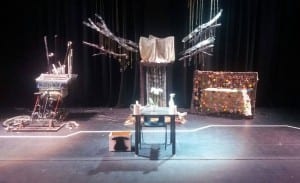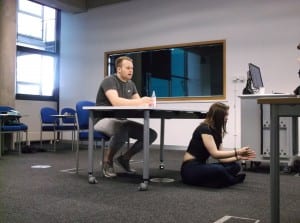On the 22nd May 2017 at 7.30pm we performed the show we had all been working to create. Overall, I believe it was a very successful performance with some very strong performances. The precision and accuracy of the choreography, along with the sheer brilliance of the set made a performance people would not forget in a hurry. Looking at my own individual performance, I thought it was believable and exciting. As an actor, I strive to develop a ‘role in a logical and coherent fashion, showing a linear progression through the play that allows an audience to understand the motives and emotional journey of that character and to go on that journey with them’ (Rush & Lowe, 2004, p.77). At times, I believe the stage set up hindered the emotional journey I wanted to take the audience on. This was because all the large centre pieces e.g. tree, hedge and the bike were situated at the back. If we were to perform it again, I would suggest moving the bike into centre stage facing the audience. This would allow us to eliminate the live streams, reducing the amount of upstage set. I also felt the live stream required the audience to observe to much, which may have hindered the overall perspective of the piece. On an individual level, I believe I needed to connect with the other ensemble members more through simple movements. Even-though we did this on occasions, I felt it would have benefited the audience more in establishing the link between the man and his inner demons. Despite this, I believe it was an exceptional performance with a couple of minor issues which could have been addressed if we were to perform it again.
Works Cited:
Rush, P & Lowe, R. (2004) A Students Guide to A2 Drama and Theatre Studies for AQA Specification, London: Rhinegold Publishing.




